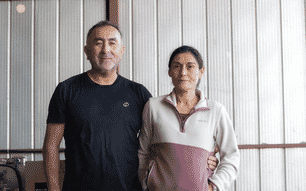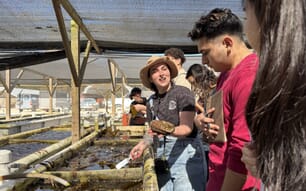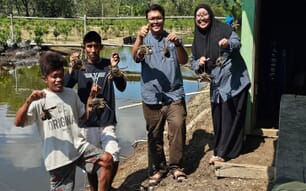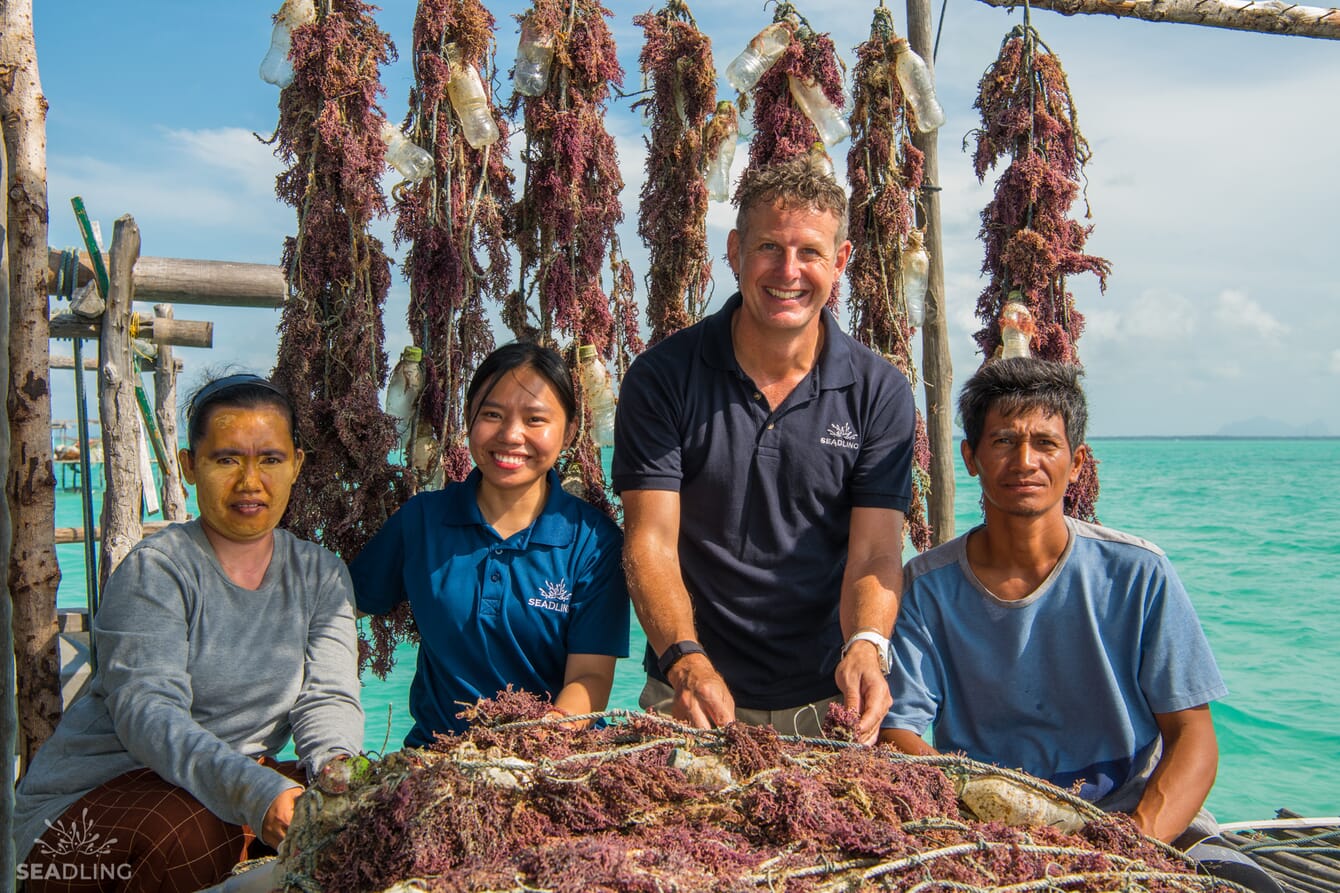
© Seadling
Simon, you were once a busy chiropractor in Jakarta. How did you end up starting a seaweed business in Malaysia?
I set off to take a two-year career break to sail across the Pacific from the Caribbean. Along the way, seeing all the destruction in the ocean – the overfishing, the pollution, and particularly, as I got deeper into Asia, how that linked up with remote communities and poverty – that’s really where it started for me.
I initially volunteered with NGOs doing marine conservation in Indonesia. They were doing important work, but I could see first-hand that, if you didn't have that livelihood option for those communities, then they may continue to make unsustainable choices such as catching sharks and turtles at night.
Once I learned about seaweed farming and saw the opportunity there, I took two years to visit communities in Indonesia to learn what's happening there, spending a lot of time drinking coffee with old seaweed farmers. That’s how I gradually refined some of my ideas around how to improve cultivation, how to grow this industry sustainably and develop new product niches for seaweeds.
Having spent all this time in Indonesia, why did you decide to set up your company in Malaysia instead?
There were fantastic opportunities with local universities in Malaysia that had great facilities and great researchers with a lot of experience with seaweed. It was the perfect place to do high quality research while at the same time being close to the farmers. So, rather than being stuck in a lab that's a plane trip away from farms, we could actually test stuff in the field.
While Seadling wants to eventually produce ingredients for human and plant health as well, why is your current strategic focus pet food?
We find that pet food manufacturers appreciate the environmental and the social impact much more than say, a poultry farmer or a pig farmer. That means we can charge slightly higher prices, which is important at this stage while Seadling is still quite small.
How do you process the seaweeds?
We ferment Kappaphycus to increase the yield of oligosaccharides and vitamin K-2 to make it a more powerful prebiotic ingredient. We filed our first patent on our fermented product in Singapore in January and we continue to play with this fermentation process to create different product lines, looking towards different species of seaweeds in the future.
Going forward we also want to switch to purchasing wet seaweed as opposed to dried seaweed. That will drive down our costs, and our products will become a lot more nutritious.
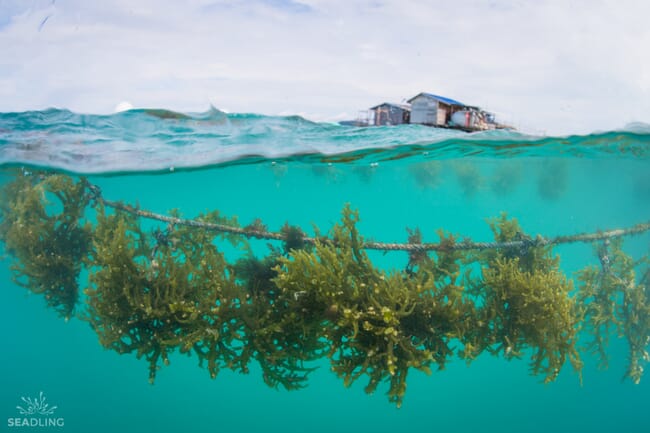
© Seadling
Where is Seadling today with its product development, and where do you hope to be within the next 18 months?
Right now we are supplying small pet food manufacturers in Malaysia and Singapore. In the middle of this year, we'll be in a product of a US manufacturer. We also have product development partnerships with Nestle, Mars, and Thai Union. I expect within 18 months, we'll be ready to go to market with at least one top tier corporate manufacturer.
You have a lab, a hatchery, test plots in the sea. Unlike other seaweed product manufacturers, you decided to vertically integrate. Why?
The whole reason we are so focused on improving seaweed cultivation is, first of all, scalability. And secondly, to secure the future of the business. We are planning to be a major manufacturer. If you don't have secure volumes and quality of raw material, then you don't have a scalable business. Hands down.
In the long term, though, the effort we are putting in now will afford us opportunities to license out our IP to other industry players. So if, for example, a bioplastics company wants to start farming in Southeast Asia, we can partner with them to help with their cultivation.
You mention cultivation IP. How should we understand that?
There are a couple of aspects to the IP we are developing. The first is at the seed stage: the process of creating and growing out seeds that we are developing is showing a growth advantage.
The second aspect is the farming calendar: knowing what to plant when. We are building up the knowledge about which particular variety performs best in a particular place at a particular time. Once we have that methodology nailed down, we can apply that to a new location with confidence.
And the last is genetics. We're intent on developing our own varieties, and we have the possibility to register our strains for plant variety status. But that’s just one piece of the puzzle. Already, a lot of the advantages we are seeing are coming from improvements at the hatchery stage and building out the farming calendar.
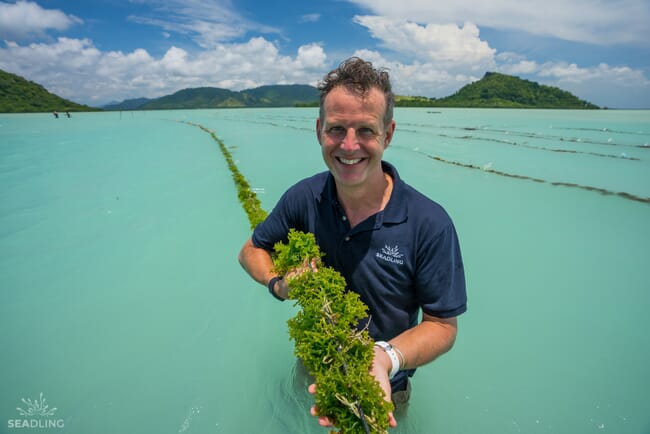
© Seadling
How would you propose to support smallholder seaweed farmers whilst also achieving the lower price points needed for large commodity markets?
I think working with smallholder farmers is a great way to scale the seaweed industry in tropical developing countries. First of all, because they have a lot of experience – they are already doing it today. And there are a lot of them. Let’s not forget that many other big industries in tropical countries, like cocoa for instance, are also carried by smallholder farmers.
Improving how they farm is the key for us. The techniques they are using to farm haven’t changed in 50 years. There is the opportunity for us to double, triple, quadruple what they are growing today.
That doesn’t mean it’s simple. People who aren’t familiar with the region often don’t grasp the enormous diversity here in terms of cultural groups, languages, traditions. Working with smallholder seaweed farmers is not a hands-off, plug-and-play solution – it takes time and effort to build trust with communities.
You work with Bajau and Suluk, stateless people living at sea in sometimes difficult conditions. Does that create extra obstacles?
I’ll refer here to Al-Jeria Abdul, our senior executive for outreach and impact.
As she explains: “It’s not easy to change farmers’ minds. Attending school is difficult for them as they are remotely located, without proper documentation; few people are literate. They are wary of outsiders and not quick to embrace change. Even though I am Bajau myself, changing the mindset of farmers can be really challenging."
“We have partnered with certain farmers since 2019, when we first came out here. In our Ecofarm project we replace their farm tools with more durable floats and nylon instead of plastic raffia string. Since then, they have shown a change in lifestyle, they are more aware of plastic pollution issues. But poverty pushes people to always think first, ‘what should I
feed my children?’, rather than, ‘what should I do for the ocean?’ That's the reality. However, we do believe that small changes can grow into bigger accomplishments," she concludes.


